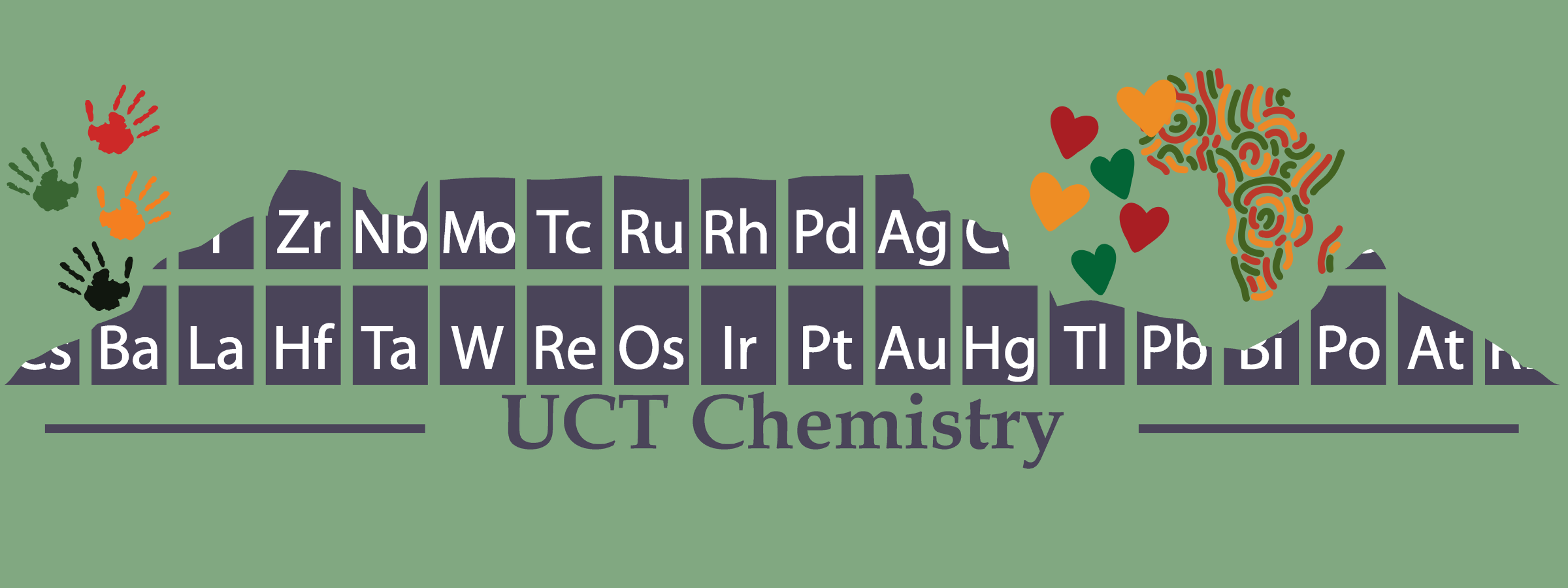Prof Susan Bourne
6.17, PD Hahn building, upper campus
Biography
- Interim Dean of Science (2018 - 2019), University of Cape Town, RSA
- Professor (2008 - present), University of Cape Town, RSA
- Associate Professor (2003 - 2007), University of Cape Town, RSA
- Senior lecturer (1998 - 2002), University of Cape Town, RSA
- Lecturer (1994 - 1998), University of Cape Town, RSA
- Robert A Welch postdoctoral fellow (1993), Texas Christian University, USA
- BSc Honours (1987), PhD (1991), University of Cape Town, RSA
Research Interests
Supramolecular chemistry exploits molecular recognition processes which allow the construction of molecular assemblies without the use of covalent bond formation. Instead, weaker (or softer) interactions such as hydrogen bonding and dispersion interactions form the basis for holding these assemblies together. Weaker interactions of this sort are commonly observed in nature, giving rise to the properties of many important biological systems. Current research areas include:
1. CRYSTAL ENGINEERING OF SUPRAMOLECULAR MATERIALS
Crystal engineering is a multi-disciplinary field, frequently involving cooperation between synthetic, theoretical and analytical chemists. As a sub-branch of supramolecular chemistry, crystal engineering aims to utilise the carefully chosen intermolecular interactions between components to achieve control of the bulk properties of solid aggregates. Applications of such new materials include optoelectronics, non-linear optics, magnetism and conductivity, molecular storage and topologically-specific reactivity.
The ability to tune the structural and electronic properties of many molecular species is useful in that it allows the design of new materials for a range of different applications including catalysis and molecular storage. These applications require that molecules be aligned in the solid state so that the electronic and magnetic structures combine in the appropriate fashion. The chief aim of crystal engineering is thus to develop a similar ability to assemble molecules or ions into crystalline (hence periodic) functional structures, using supramolecular interactions such as hydrogen bonding, p-p interactions or coordination bonds.
We have undertaken work on the production, characterisation and utilisation of metal-organic networks and frameworks with the focus on molecular storage functionality. Publications listed below outline the study of a series of 2D- and 3D- metal-organic frameworks (MOFs) including some hitherto-unknown network topologies in anionic networks. Several display a “breathing mechanism” as these MOFs are capable of releasing and resorbing guest molecules without loss of structural integrity (although accompanied by loss and regain of crystallinity).
Expanding the range of bridging ligands to aromatic pyridylcarboxylates, we have reported the formation of a new class of thermo- and solvatochromic MOFs. Since these are capable of releasing and resorbing guest molecules from vapour or liquid, without loss of crystallinity, we have exploited them as chemo-selective sensors and molecular sponges for the sorption of a range of alcohols.

2. CO-CRYSTALLIZATION AS A MEANS OF MODIFYING PHYSICAL PROPERTIES
A further aspect of utilising crystal engineering principles involves identifying the intermolecular interactions which most reliably form between particular molecular moieties. An understanding of these interactions may allow the predictable formation of a “supramolecular synthon” which in turn may drive the crystallisation morphology and properties of a substance or substances. While a range of intermolecular interactions exist, hydrogen bonding most readily lends itself to this type of analysis as it is usually relatively robust and has a strong directional component. In the work undertaken in my laboratory during the review period, we have focussed our attention on this aspect of crystal engineering with the goal of producing and exploiting co-crystals and organic salts.
Representative Publications
- Cyclometallation of Lanthanum(III) based MOF for catalytic hydrogenation of carbon dioxide to formate. P. Tshuma, B.C.E. Makhubela, L. Öhrström, S.A. Bourne, N. Chatterjee, I.N. Beas, J. Darkwa, G. Mehlana. RSC Adv. 2020, 10, 3593-3605. DOI: doi.org/10.1039/c9ra09938g
- Solvatochromism and selective sorption of volatile organic solvents in pyridylbenzoate metal-organic frameworks. C.A. Ndamyabera, S.C. Zacharias, C.L. Oliver, S.A. Bourne, Chemistry (special issue Supramolecular chemistry in the third millennium) 2019, 1, 111-125. DOI: doi.org/10.3390/chemistry1010009
- Conformational chiral polymorphism in cis-bis-triphenylphosphine complexes of transition metals. N. Tshabang, G.P. Makgatle, S.A. Bourne, N. Kann, J.D. Evans, F-X. Coudert, L. Öhrström. CrystEngComm, 2018, 20, 5137-5142. DOI: doi.org/10.1039/c8ce00337h
- Supramolecular metallogels constructed from carboxylate gelators. S.C. Zacharias, G. Ramon, S.A. Bourne. Soft Matter, 2018, 14, 4505-4519. DOI: doi.org/10.1039/C8SM00753E
- Control of crystal structure using temperature and time. S.C. Zacharias, G. Ramon, S,A. Bourne. Acta Crystallogr., 2018, B74, 354-361. DOI: doi.org/10.1107/S2052520618007795
- Unravelling chromism in Metal-Organic Frameworks. G. Mehlana, S. A Bourne, CrystEngComm, 2017, 19, 4238-4259. DOI: 10.1039/c7ce00710h
- Structural diversity observed in 2D square lattice metal-organic frameworks assembled from Zn(II) and 3-(4-pyridyl)benzoate. G. Mehlana, C. Wilkinson, C. N. Dzesse T., G. Ramon, S.A. Bourne. Cryst. Growth Des., 2017, 17, 6445-6454. DOI: doi.org/10.1021/acs.cgd.7b01101
- Sorption properties towards environmentally important VOCs of half-sandwich Ru(II) complexes containing perylene-bis-imide ligands. P. Pagano, P. Pelagatti, A. Bacchi, M.R. Chierotti, S.A. Bourne, G. Mehlana. Inorganic & Nano-metal Chemistry, 2017, 47, 427-432. DOI: doi.org/10.1080/15533174.2016.1186068
- Reversible guest removal and selective guest exchange with a covalent dinuclear wheel-and-axle metallorganic host constituted by half-sandwich Ru(II) wheels connected by a linear diphosphine axle. A. Bacchi, S. A. Bourne, G. Cantoni, S.A.M. Cavallone, S. Mazza, G. Mehlana, P. Pelagatti, L. Righi. Cryst. Growth Des., 2015, 15, 1876-1888. DOI: doi.org/10.1021/acs.cgd.5b00059
- The role of C-H…π interactions in modulating the breathing amplitude of a 2D square lattice net: alcohol sorption studies. G. Mehlana, G. Ramon, S. A. Bourne. CrystEngComm, 2014, 16, 8160-8168. DOI: doi.org/10.1039/C4CE00496E
